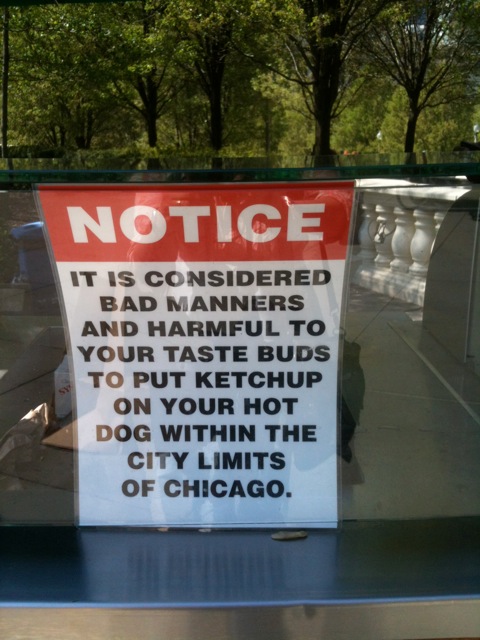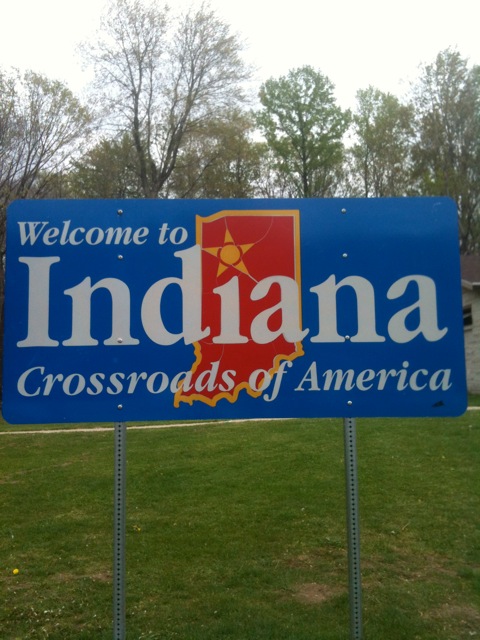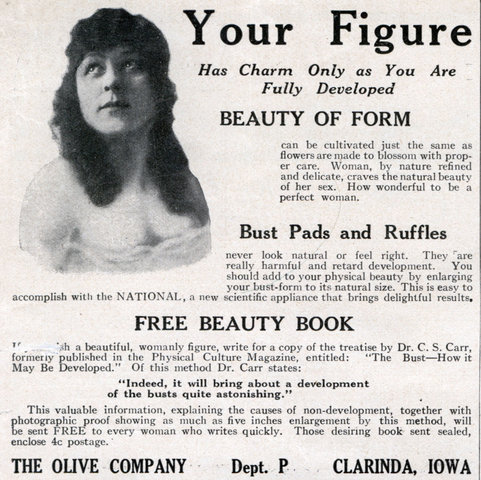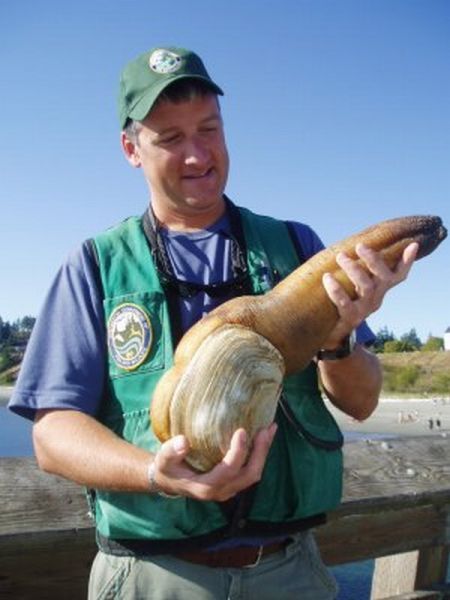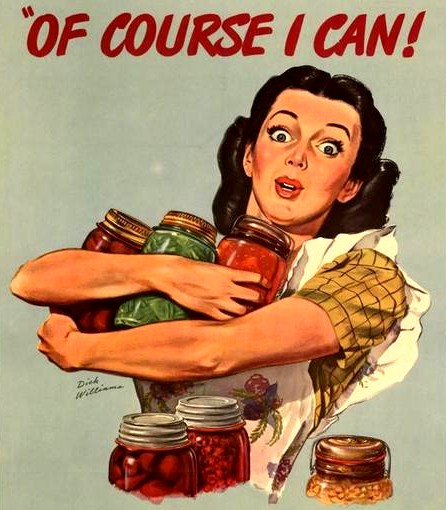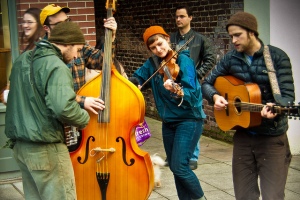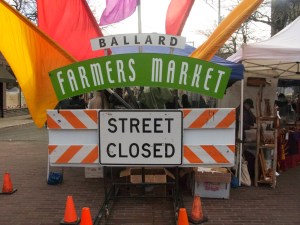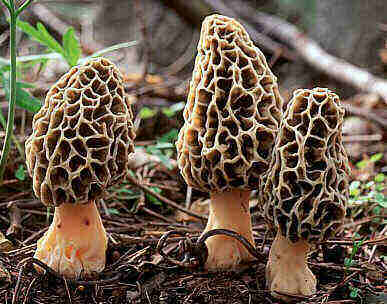We are driving along Interstate 69 on a Thursday night listening to Delilah, the syndicated radio DJ who offers a sympathetic ear to listeners calling to ask for advice and plays songs (usually love songs) to fit their dilemmas or fulfill their dedication requests.
I’d read about Delilah and her immense popularity years before, but had forgotten all about her until we pressed the “seek” button on the rental car radio in the middle of nowhere, in the middle of the country. We’re just in time to hear a sad, sweet-voiced caller explain her dilemma and ask Delilah to show her the way.
Our trip is one of looking forward and backwards. It began in Chicago, where we met up with Jeff’s Boston-based cousin Deb, her husband Tommy and 13-year-old daughter Nell. They are favorite travel companions of ours, mostly because of their boundless intellectual curiosity, but also because Deb and Tommy always wake up first and make the coffee. If you have a question about anything, Deb is right there with her iPad looking up the answer, suggesting books on the topic and, if you’re not careful, she will order you those books and have them shipped to your house with her Amazon Prime membership, before you have time to blink.
Scheduled on the fringes of a trip to visit family in Michigan, I relished our Chicago foray as a chance to expose our daughters to art and architecture and show them a college campus or two. Daughter #1 will soon be in high school and Daughter #2 will be attending a new school next year. In preparation for the changes they’ll experience, I have been trying to plant the seeds of the future. A future that belongs to them alone and may have nothing to do with the paths their friends choose. We have had several conversations about the road less traveled. We have also talked about the differences in people’s values and in their perspectives.
Aside from a quick detour off the freeway to taste deep dish pizza on a cross-country road trip in 1982, this is my first trip to Chicago too. New places always energize me. I’m fascinated to get my first look at a Great Lake (Deb whips out her iPad and cites the lake’s surface area and length and width) and can’t stop raving about the juxtaposition of old and new architecture. My fragile neck doesn’t ache too much, though I am constantly looking up.
We go to the Art Institute, where I am excited to show the girls the masterpieces that are part of the museum’s permanent collection. I ask Deb if she remembers the now out-of-print 1970 board game Masterpiece, which was my first introduction to Degas’ bathers, Van Gogh’s sunflowers and so much more. You can count on Deb to remember a thing like that.
To get into the spirit of things, I am reading Loving Frank, Nancy Horan’s fictionalized story of the adulterous love affair between Frank Lloyd Wright and Mamah Borthwick Cheney. What compels a person to defy convention? What inspires a person to create a new art form? How do people find the courage to do so when they don’t know how things will turn out?
Jeff was born in Chicago and he and Deb played together on the shores of Lake Michigan when they were toddlers. But he moved away shortly thereafter and he hasn’t been back since. Deb attended the University of Chicago Lab School, but this is her first time back in 30 years. Our trip to Hyde Park is a trip down memory lane for her.
At the Lab School, Deb is pleased to encounter one of her favorite professors and the kids are excited when he tells them he is a psychic who can see the future. They are curious and finally he agrees to reveal one thing to each of them. “Will I get a dog?” asks Daughter #2. “Yes,” he reassures her. “A Lab?” she presses. “No, a smaller, black, fuzzy dog,” he says. (I silently thank him). “Will I be happier in eighth grade?” Daughter #1 asks shyly. “You won’t be happier until you get to high school. You’ll have a much better sense of who you are then and your entire outlook will change.”
While we enjoy deep dish pizza at Medici,
Deb produces a copy of that fateful poem, which she surreptitiously bought at nearby Powell’s Books. “Not the road less traveled again,” eye-rolls Daughter #1, but I think she’s secretly glad we have these conversations. Or at least I not-so-secretly hope she is. We deconstruct the poem. I say that if Robert Frost were to present it in a writing class today, he would be critiqued for back-pedaling in the second stanza:
Then took the other, as just as fair,
And having perhaps the better claim
Because it was grassy and wanted wear,
Though as for that the passing there
Had worn them really about the same
Was one road traveled more than the other or wasn’t it?
“I think the point isn’t that he took the road less traveled,” says Deb. “It’s that you can’t possibly know, when you embark on a path, where it will lead you. How could I know that Chicago would lead me to Boston, which would lead me to Tommy, which would lead me to Nell?” (Which would lead Jeff and me to great morning coffee and our daughters to a cousin-friend to share confidences, clothes, make-up, brownies and frappes with).
The girls’ bedroom is a jumble of shared clothes, books and jewelry. Nell shows them the Hunger Games costume designs she has developed on the iPad. Daughter #1 teaches them Japanese. Daughter #2 demonstrates make-up techniques. They are all so different. They are just beginning to recognize who they are. I wonder who they will become.
Later, in Michigan, the girls’ Abuela (a turkey-maker and a sweet-smelling woman) arranges tours for them of the university veterinary facility, where Daughter #1 learns you can have a career as a veterinary social worker, and the university basketball facility, where Daughter #2, an enthusiastic point guard, gets the hard sell for recruitment, though she is only 11.
That night, I order Masterpiece on eBay and text Deb to tell her what I have done. She tells me she has already ordered the game for me (I’m not surprised) but later manages to intercept it and have it shipped to herself. “We’ll all play it together via Skype,” she tells me.
It is only later, when I am researching Robert Frost’s poem to write this blog entry that I understand the differences in my interpretation of the poem and Deb’s, Like many people, I assumed it was called The Road Less Traveled and the primary lesson it imparts to me is to follow your own chosen path, no matter what everyone else is doing.
But the poem is actually called The Road Not Taken. My father-in-law told me it is about Frost’s decision to abandon farming in favor of the literary life. Life is full of crossroads.
But hopefully not full of regrets.
On the radio, the sad, sweet-voiced caller waits for Delilah’s advice.
“I can’t tell you what to do,” says Delilah. “You have to follow your heart.”
“But I can play you a song.”
The Road Not Taken
Two roads diverged in a yellow wood,
And sorry I could not travel both
And be one traveler, long I stood
And looked down one as far as I could
To where it bent in the undergrowth;
Then took the other, as just as fair,
And having perhaps the better claim
Because it was grassy and wanted wear,
Though as for that the passing there
Had worn them really about the same,
And both that morning equally lay
In leaves no step had trodden black.
Oh, I marked the first for another day!
Yet knowing how way leads on to way
I doubted if I should ever come back.
I shall be telling this with a sigh
Somewhere ages and ages hence:
Two roads diverged in a wood, and I,
I took the one less traveled by,
And that has made all the difference.



